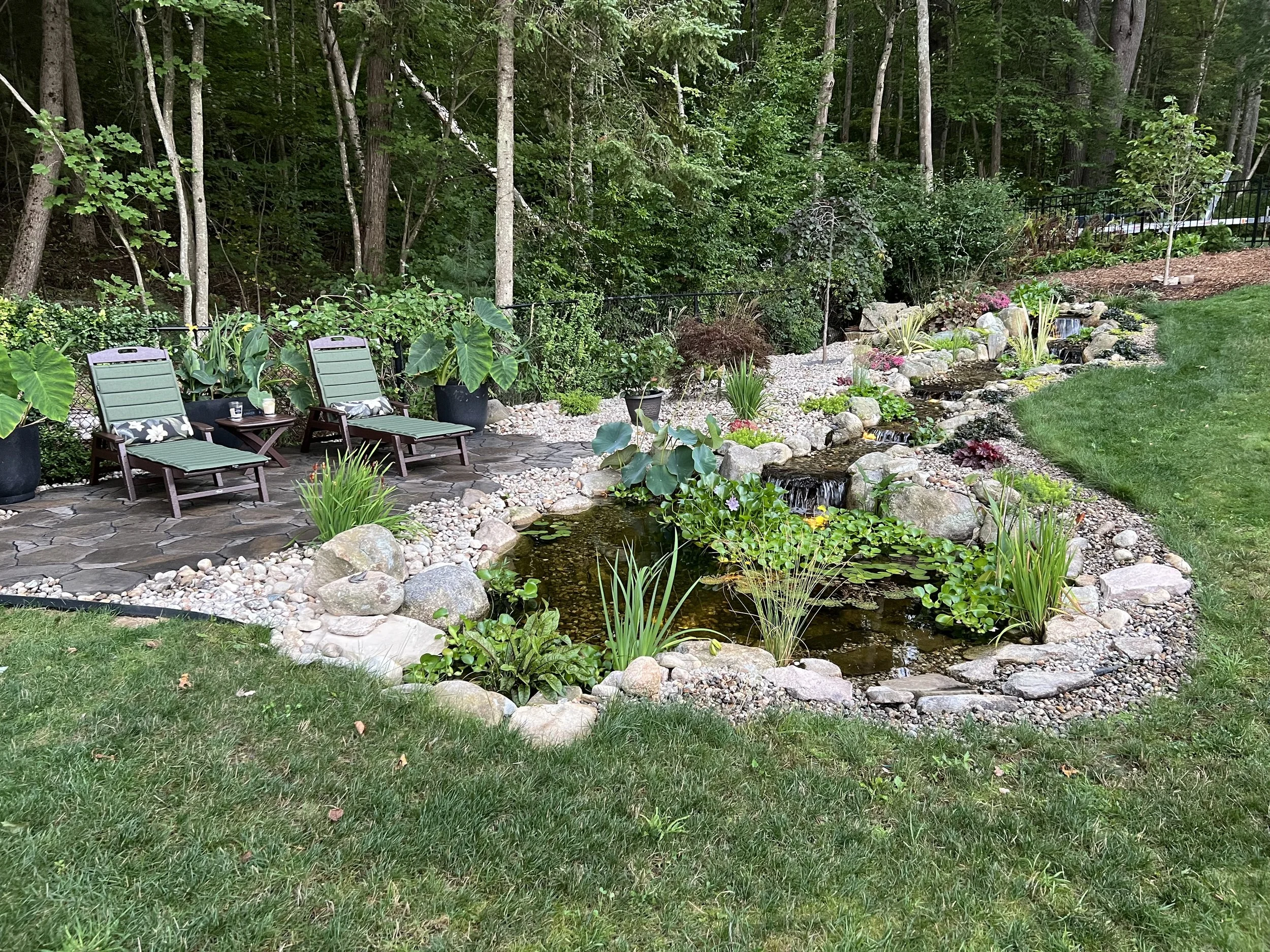You probably saw this coming: MORE plants.
The pond’s ecosystem is a new experiment for me. Luckily there’s plenty of information online to make the learning curve a little less steep.
My Aquatic Collection
As I started browsing catalogs of aquatic plants, I was surprised at how many from my existing garden could thrive with their roots submerged in water. The aquatic plant expert at my local shop says to rinse off the roots… because these plants need nutrients dissolved in water, not actual soil, there’s no sense in dirtying the pond water.
Volunteer Nature
I decided I didn’t want to (yet) deal with fish in my pond, which would add another level of maintenance and complexity. Fish require feeding, correct pH, and winter aeration. Instead, I let my pond be a habitat for the woodland creatures that show up to visit, feed themselves, and do whatever they do in the winter. It has made for some interesting nature watching.










































































